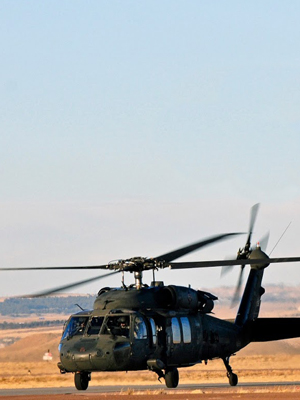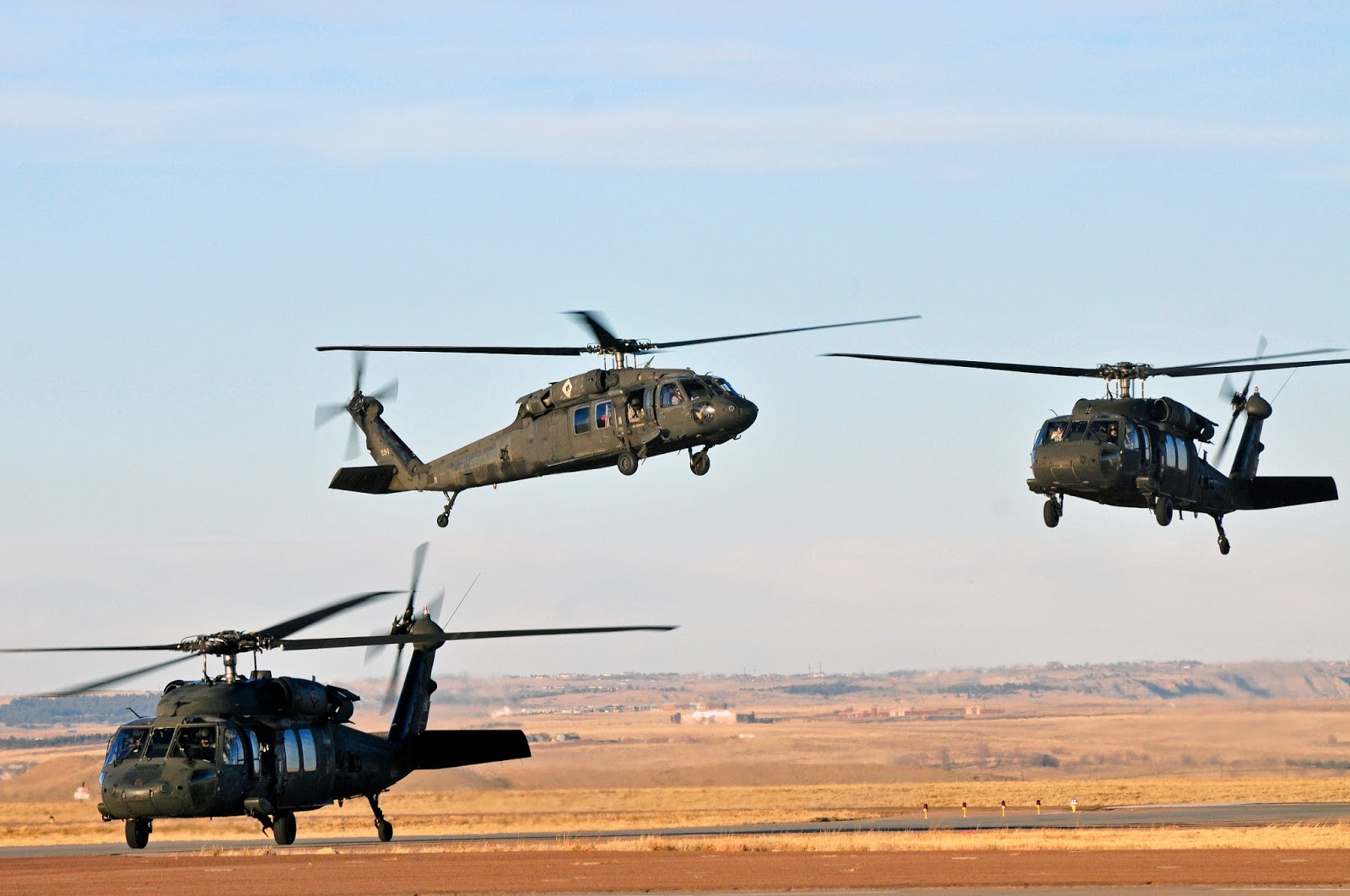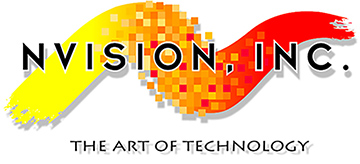NVision 3D Scanning Helps Army Depot Get Aircraft Back in the Skies Faster
NVision’s 3D scanning and reverse engineering services are helping a U.S. Army aviation maintenance depot cut the time required to reverse-engineer rotary-wing aircraft components from weeks to hours. Previously, the depot used a coordinate measuring machine (CMM) to capture the numerous data points needed to define the complex geometry of structural aircraft components.
“NVision’s scanning technology captures the millions of spatial data points much faster than the CMM, letting us define the part surface in a matter of hours,” says the depot’s Machine Shop Supervisor. “As a result, we can quickly reverse engineer parts and get aircraft back into service much faster.”
Ground Support: Why Army Depots Matter
 Army depots are military facilities responsible for maintaining and repairing equipment such as aircraft, tanks, and other weapon systems, ensuring they are ready for operations. They also store battlefield supplies and manage logistics for military units.
Army depots are military facilities responsible for maintaining and repairing equipment such as aircraft, tanks, and other weapon systems, ensuring they are ready for operations. They also store battlefield supplies and manage logistics for military units.
“Depots are critical to maintaining U.S. military operational readiness,” says Steve Kersen, President of NVision. “They make sure key equipment stays operational not only for the Army, but for every branch of the U.S. military.” In addition to the Army, the depots maintain and service equipment for the U.S. Navy, Marine Corps, Air Force, Homeland Security, the Department of State, and even Foreign Military Sales.
When it comes to public perception of their importance, Army depots are like icebergs. Just as most of an iceberg lies hidden below the surface, so too do depots’ vital functions go largely unnoticed. Those functions include:
- Performing large-scale repairs, overhauls, and refurbishment of military equipment and aircraft
- Testing equipment to ensure systems are safe, reliable, and mission-ready
- Maintaining technical data, specialized tools, and unique design knowledge
- Operating at facilities including logistics centers, shipyards, and readiness bases
- Supporting software maintenance for military systems
“Just as our bodies break down without food and water, our Army can’t fight without the depot network that repairs and restores its equipment,” says Kersen.
Depots are also cost-effective: on average, remanufacturing, or restoring, an aircraft at an Army depot costs less than half the price of buying a new one — about 48% of new-buy cost, saving roughly 52%. (Actual savings vary depending on aircraft type, damage, and repair level.)
Getting From Hangar to CAD Models in Record Time
The Army depot that turned to NVision is the largest facility in the world providing overhaul, repair, modification, recapitalization, retrofit, testing, and modernization of helicopters, engines, and rotary-wing components. Their full range of services makes them a one-stop maintenance hub, saving clients worldwide considerable time and money.

Three UH-60 Black Hawk helicopters maneuver during training over open terrain.
Reverse engineering is often required to restore aircraft such as the UH-60 Black Hawk, AH-64 Apache, and CH-47 Chinook — many of which have been flying in some form for 40–60+ years. Because many were designed before widespread use of computer-aided design (CAD), original blueprints may be missing or incomplete. The depot’s machine shop is frequently tasked with producing structural parts, which requires generating CAD models before CNC machining can begin. In the past, this was done by using a CMM to take physical measurements.
But CMMs have drawbacks: they capture data points one at a time, so measuring a single large, complex part could take days. CMM probes must also physically touch surfaces, which can introduce operator error and makes it difficult to reach inside tight cavities or fragile parts. Additional CAD work is often needed to compensate for missing data.
“While researching providers, we found NVision’s 3D scanning services offered distinct advantages in speed and accuracy over our previous measurement process,” says the depot’s Machine Shop Supervisor.
“We provide complete and detailed 3D surface capture for even the toughest geometries,” adds Kersen. “For Army depot projects, our high-accuracy HandHeld scanner is ideal—every curve, every feature, nothing is missed with our scans.”
Scanning with Surgical Strike Accuracy
The HandHeld scanner NVision uses for its projects gives the Army depot several key advantages:
- Portability. Operators can move freely around the object, capturing comprehensive digital models of complex parts. “Our scanner delivers complete surface-topography data of an object’s entire surface — every contour, groove, hole, and texture, even scratches and micron-level details,” says Kersen. “We leave no contour unmeasured.”
- Fast data capture. As the scanner’s laser sweeps across an aircraft component, it rapidly collects millions of measurement points, each with x, y, z coordinates and i, j, k vectors (position and orientation data). The resulting “point cloud” contains complete surface data. Tasks that once took months can now be done in days — even hours.
- High precision. The scanner captures 60,000 spatial measurements per second with an accuracy of ±0.025 mm (25 microns), equal to one-thousandth of an inch. This precision is invaluable when measuring parts with tight tolerances.
- Versatility. The scanners adapt easily to the application, capturing 3D geometry across a wide range of sizes — from fighter jet exteriors to small components like angle-of-attack sensors.
From Point Cloud to Flight-Ready Part
Once scanning is complete, specialized software converts the point cloud into a stereolithography (STL) polygonal model. NVision engineers then refine this data into a CAD file compatible with platforms like SolidWorks, NX, or CATIA. These digital models enable precise replication and, when necessary, modifications to improve performance.
Military engineers then review and refine the CAD models before transferring them into CNC programming software to generate machining code. That code drives machining centers to fabricate the replacement parts.
“NVision’s services have accelerated our return-to-service cycle time, increased the accuracy of our parts and repairs, and boosted productivity in the reverse engineering workflow,” states the depot’s Machine Shop Supervisor. “They have, in every sense, helped our work reach new heights.”
For more information about NVision’s 3D scanning/measurement and reverse engineering services, contact NVision, Inc., 577 Commerce Street, Suite 100, Southlake, TX 76092. Tel: 817.416.8006, Fax: 817.416.8008, Email: sales@nvision3d.com, Web: https://www.nvision3d.com.
About NVision
NVision, Inc. (www.nvision3d.com) was established in 1990 with one goal in mind: to provide customers with the highest accuracy non-contact optical measurement services for Reverse Engineering and Inspection. NVision provides complete reverse engineering, encompassing 3D scanning/measurement, CAD modeling, 2D drawings, materials analysis, and metallurgy capabilities. We deliver a complete solution that ensures top-to-bottom replication accuracy.
Focusing our expertise on the aerospace, power generation, and oil/gas industries, NVision provides exceptional contract scanning and reverse engineering services to companies throughout North America. With a plethora of the latest scanning tools and materials analysis equipment, our elite team of engineers provides customers with an unmatchable level of experience and is able to advise and assist with the most difficult engineering challenges.
NVision's clients include industry leaders such as Boeing, GE, Lockheed, Lear, NASA, Porsche, Raytheon, Siemens, Toyota, and every branch of the U.S. military. Our work has been featured in Quality magazine, Packaging Technology Today, Moldmaking Technology, Digital Engineering, 3D Printing Industry, Today's Medical Developments, Machine Design, Design & Development Today, and many other leading publications.
